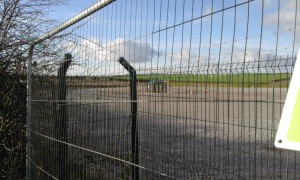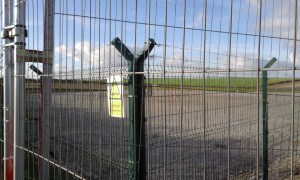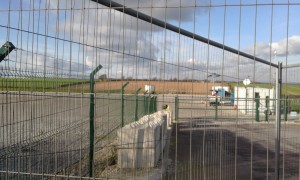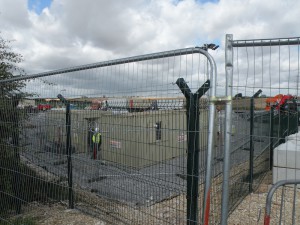Restored, 12th April 2016
Restoration, Spring 2016
- 11th April. Almost done.
Decommissioned, January 2016
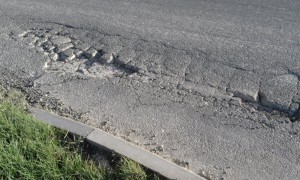
Road damage at the site entrance. No testing, never mind high volume fracking (which would require thousands more vehicle movements) even took place at this well site.
Studies from the US show that the cost of repairing road damage alone can cost the state more than the income received from the oil & gas industries.
Decommissioning, November 2015
- From 1km east.
- From 200m west.
- 13th November
- 13th November
- 11th November, 7pm
- 11th November, 7pm
- 11th November, 7pm
- 11th November, 7pm
- 11th November, 7:15pm. From 500m east.
- 11th November, 7:15pm. From neighbouring Cold Harbour Farm, 1km north.
- 10th November, 10pm
Community Support, September 2015
Vehicle Convoys, August 2014
Dead Hares in Ditch, July 2014
Leaky Tank, May 2014
Video
Owl
The Ecological Report for Crawberry Hill simply read, “There are no records for barn owl within 1km of the Site.”
Proper conservation of barn owls, protected under the the Wildlife and Countryside Act 1981 (which, incidentally, makes it illegal to catch, capture or handle a barn owl) means avoiding disturbance to foraging birds resulting from excessive noise and lighting.
Recording of barn owl sightings, and other protected species will be significant in future planning applications. You can help with this by Recording Wildlife.
Drilling

Photo by Frack Off.
Crawberry Hill Well Site Construction, Autumn 2012
Photos by Rathlin Energy. Previously available on their website, but since removed.
Hedgerow is removed to access the site.
The site, a hectare in size, is levelled.
A ditch is dug around the edge to collect rainwater and spills from the well pad, and take it to a tank.
An impermeable membrane is laid over the whole well pad to contain spills, with gravel above and below.
- The impermeable membrane under the site.
- The well cellar.





